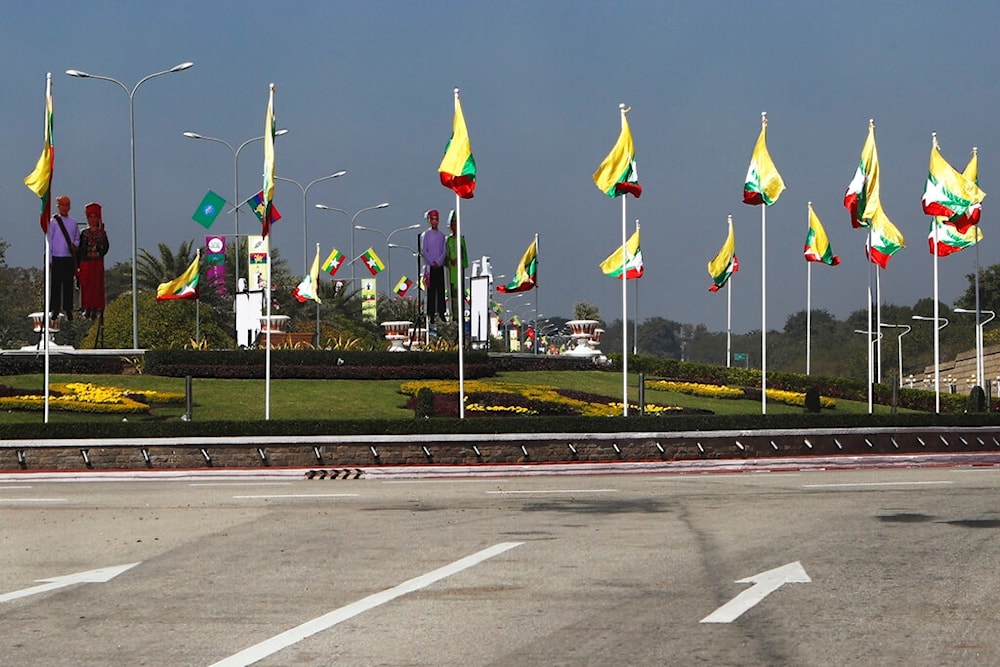Myanmar, Russia trade in national currencies to kick off in 2-3 months
Global trends of de-dollarization are picking up speed as Myanmar and Russia are set to start trade with their national currencies starting February 20.
-

National flags line the traffic circle ahead of Saturday's 75th Union Day, Friday, Feb. 11. 2022, in Naypyitaw, Myanmar (AP Photo)
Myanmar is set to engage in trade with Russia using their respective national currencies within the next two to three months, as indicated by Toe Aung Myint, the Vice Chairman of the Myanmar Banks Association. He mentioned that similar measures are under discussion with other countries.
"It will not be a long process. I think it will happen in a short period of time — two to three months at the most," Toe Aung Myint said.
Myanmar is currently working to reduce the volume of trade in dollars by substituting it with partner national currencies. The Burmese official stated that similar efforts are in progress with Russia; however, the completion of the process requires the Bank of Russia to establish a branch in Myanmar.
"We have been doing this for some time — with China and Thailand we use local currencies. Now we are discussing the same measures with the Central Bank of India. Moreover, we are now also discussing how to use rubles [Russian currency] and kyats [Myanmar currency] instead of dollars," Toe Aung Myint added.
Read more: De-dollarization: Slowly but surely
Earlier in the day, Myanmar's Minister of Investment and Foreign Economic Relations Kan Zaw announced that Russia's Mir bank cards would be accepted for payments in Myanmar starting February 20, following intergovernmental talks in Moscow.
Toe Aung Myint confirmed this statement, noting that the central banks of Russia and Myanmar have already signed the necessary agreement.
It's worth mentioning that Mir cards are currently accepted with minimal to no restrictions in countries such as Armenia, Belarus, Cuba, Kazakhstan, Kyrgyzstan, Tajikistan, Venezuela, and Vietnam.
US dollar shares shrink in global reserves amid de-dollarization trend
The International Monetary Fund (IMF) revealed that in the third quarter of 2023, the US dollar's share in the global central bank reserves sunk to 59.2% amid efforts to de-dollarize the global financial economy.
While the US dollar remains the dominant international reserve currency, its shares plunged from 70% at the start of the millennium, constituting more than a 10% decrease in two decades. The euro comes in second at a sloping 19.6%. However, the Japanese yen showed a 0.2 increase over the previous quarter, from 5.3% to 5.5%. Other currencies, including the yuan, pound, Canadian dollar, and Swiss franc, saw very slight to negligible changes.
According to SWIFT, a global financial messaging service, collected data showed that the Chinese yuan international payments share hit a record high in November, becoming the fourth most traded currency globally. Cross-border yuan trades have also increased as China's People's Bank carries over 30 bilateral currency exchanges with foreign central banks, including those of Saudi Arabia.
This signifies China's anti-dollar efforts and plans to promote the Yuan as an alternative currency.
Read more: 1 in 3 UN nations abandoning USD, opting for national currency trades

 3 Min Read
3 Min Read










